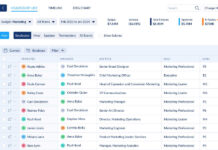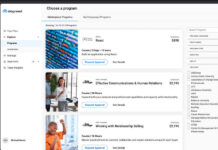
We haven’t seen any research reports yet on the “Outlook for Asynchronous Communications Tools in the HR Function,” but interest from employers and vendors in the idea seems to have steadily increased over the last year.
On the face of it, this is counterintuitive. Messaging platforms and conversational interfaces have garnered a growing amount of attention among HR professionals, especially as the uptick in remote work made communications and collaboration more challenging.
We haven’t seen any reports on the “Asynchronous Communications Tools in HR,” but interest from employers and vendors in the idea seems to have steadily increased over the last year. #HRTech #HR Share on XBut while many analysts and executives focus on the immediacy offered by tools like Slack and Microsoft Teams, hints are emerging that all those real-time messages are burying workers with too many tasks and too many messages, all of them coming too fast.
Since the Covid-19 pandemic began, collaboration platforms including Slack, Teams and Workplace from Facebook have seen a surge in popularity, according to The Wall Street Journal. Between January and April 2020, the average user increased their time on Slack from 85 minutes per day to about 120 minutes, the Journal said. Last March, instant messaging on Teams rose by 72%.
‘Always On’ Fatigue
However, the “always-on” approach to work these platforms facilitate—if not encourage—is encountering something of a backlash. At least some employers are reducing, or eliminating, pressure on their workers to be ready for a stream of chat messages and calls on any given day, the Journal said.
Instead, they’re looking more closely at asynchronous communications tools or, basically, messaging that’s not intended to generate an immediate response. Email’s one example, although the term can apply to most any product that delivers messages without pressing the recipient to make an immediate response.
Executives say asynchronous communications gives users the opportunity to digest information and breathe, even as it offers options for more dynamic, more tailored messages. Paylocity users, for example, use its video-messaging tools to deliver company-wide as well as personal messages, performance management comments and training.
A number of HR technology vendors have added asynchronous communication tools in the last year or so, including SparkHire, Paradox, iCIMS and Phenom. Slack, too, is developing an asynchronous video feature, the Journal reported.
“I think this idea of flexible schedules and communication, which has been a big point of conversation [in 2020] will continue to be throughout 2021,” said Paylocity CEO Steve Beauchamp.
Image:















